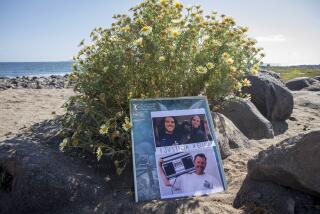Hairy Vetch Frees Farms of Plastic Mantle : Ecology: Researcher uses cover crop as a way to keep weeds down and moisture in the soil. It also boosts plant yields and makes chemical fertilizers unnecessary.
Every year, Florida vegetable farmers lay enough plastic sheeting on fields to tie a black cummerbund 90 times around Earth.
Plant physiologist Aref Abdul-Baki believes he has a better way to keep weeds down and moisture in the soil.
For the past five autumns, the Department of Agriculture scientist has planted hairy vetch, a winter annual cover crop. Every spring, he mows the crop and grows long rows of tomato plants that are greener, bushier and produce more fruit than those grown under plastic.
“You are not adding anything to the soil by using that plastic,” Abdul-Baki said, and the plastic isn’t biodegradable. “Where are we going to bury it?”
Plastic is the most commonly used ground cover in commercial vegetable farming. Florida farmers alone use enough plastic every year to stretch about 2 million miles, Abdul-Baki said.
Long before the era of plastic, the Romans and ancient Greeks used hairy vetch as “green manure,” plowing it into their fields, said Abdul-Baki, who won an Agricultural Research Service award in July for his vetch research.
At the Agricultural Research Center in Beltsville, the cover crop, which resembles a shaggy vine and can grow branches up to 7 feet long, is planted in the fall. It is mowed in early May, the same day seeds are planted, and left on top of the soil, keeping weeds down and moisture in, he said. As the ground cover decomposes, it nourishes the soil--so much so, Abdul-Baki said, that it makes chemical fertilizers unnecessary.
The plants grown on the hairy vetch look healthier and have more foliage--which hides extra fruit, Abdul-Baki said. The plants grown in plastic-covered earth appear less robust, with wilted bottom leaves.
In the five years Abdul-Baki has conducted the experiment, never have the tomato plants grown on vetch had a worse yield than those grown using plastic.
“The best year, we had twice as much yield under hairy vetch as under plastic,” he said.
And there’s another benefit to using hairy vetch. It’s cheaper.
Buying, installing and removing the plastic costs farmers about $750 per acre, Abdul-Baki said. The vetch costs about $35 an acre to plant and saves on fertilizer costs.
“It wasn’t until I started doing the vetch that I really started taking off,” said Norma Wilson, who has operated a small organic farm in Lovettsville, Va., for eight years. “There’s so many positives to using it.”
The vetch, which she has used for the last two years on tomatoes, corn and squash, reduced her overhead and allowed her to put more resources into marketing her vegetables, Wilson said.
The ground cover is also “a haven for the beneficial insects” who then keep the “bad guys” off her vegetables, she said.
Maybe more important for Wilson, the vetch’s root system holds onto the nitrogen in the soil, reducing the amount that runs into the nearby Potomac River and flows down to the Chesapeake Bay, she said.
The method also has its place on larger commercial farms.
“We’re actively looking for better ways to grow our crops that are more environmentally friendly,” said Brennan Starkey of Starkey Farms on the Eastern Shore. Hairy vetch is one of the options being considered, he said.
The 2,000-acre commercial farm, which sells produce to stands and supermarkets, this year tried the vetch method on about 20% of the tomato crop, Starkey said. Next year, the farm could use it on part of the sweet corn crop, he said.
“We’re impressed with what we’ve seen so far,” he said.
More to Read
Start your day right
Sign up for Essential California for news, features and recommendations from the L.A. Times and beyond in your inbox six days a week.
You may occasionally receive promotional content from the Los Angeles Times.






